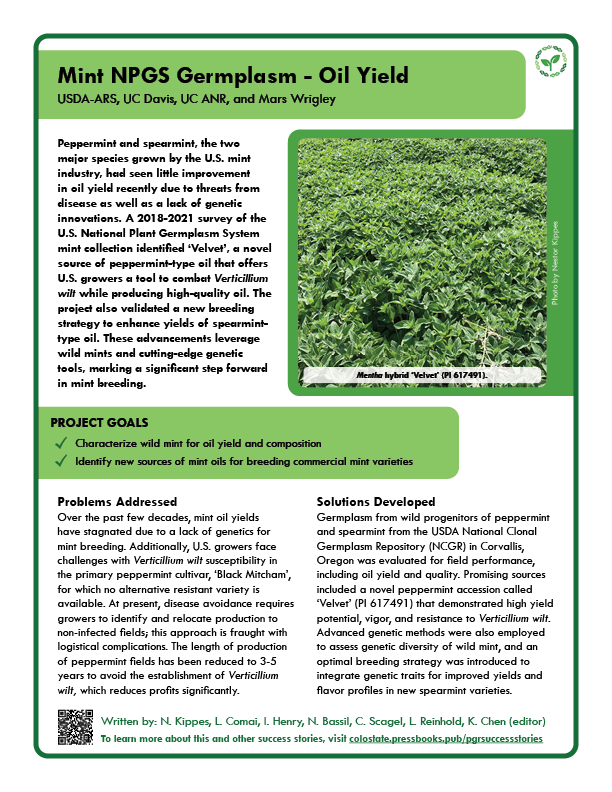Spices and Herbs
Mint NPGS Germplasm – Oil Yield
Unlocking Mint’s Potential: New Sources for Higher Oil Yields
Nestor Kippes; Luca Comai; Isabelle M. Henry; Nahla V. Bassil; Carolyn Scagel; and Lauri Reinhold
Comai Lab, Genome Biomedical Science Facility, Room 4409, 451 Health Sciences Drive, Davis, California 95616.
USDA-ARS National Clonal Germplasm Repository, 33447 Peoria Rd, Corvallis, Oregon 97333.
Corresponding author: nfkippes@gmail.com
OUTLINE
1. SUMMARY
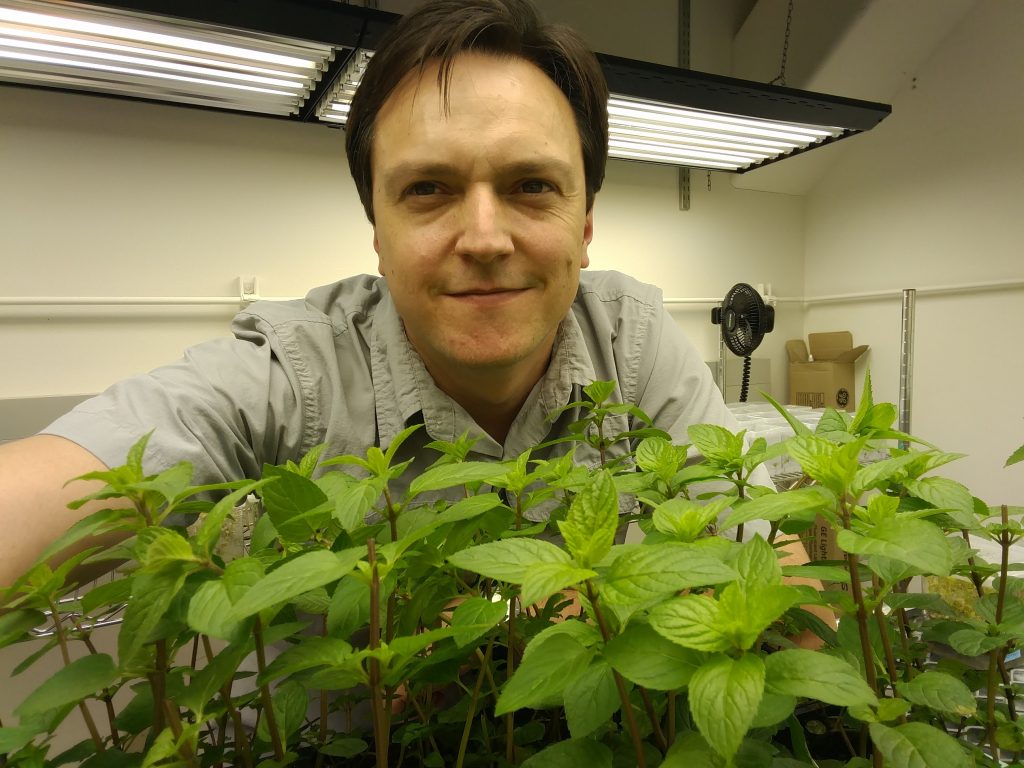
A survey of the U.S. National Plant Germplasm System (NPGS) mint germplasm collection between 2018 and 2021 identified a novel source of peppermint-type oil. The project also validated a new breeding strategy to enhance yields of spearmint-type oil. These advancements leverage wild relatives and cutting-edge genetic tools, marking a significant step forward in mint breeding.
The goals of this project were to:
- Identify and characterize new sources of peppermint and spearmint-type oils, enabling the breeding of superior mint clones for commercialization.
- Characterize mint wild progenitors for field performance, including oil yield and composition.
Download a printable fact sheet by clicking the image below.
2. PROBLEMS ADDRESSED
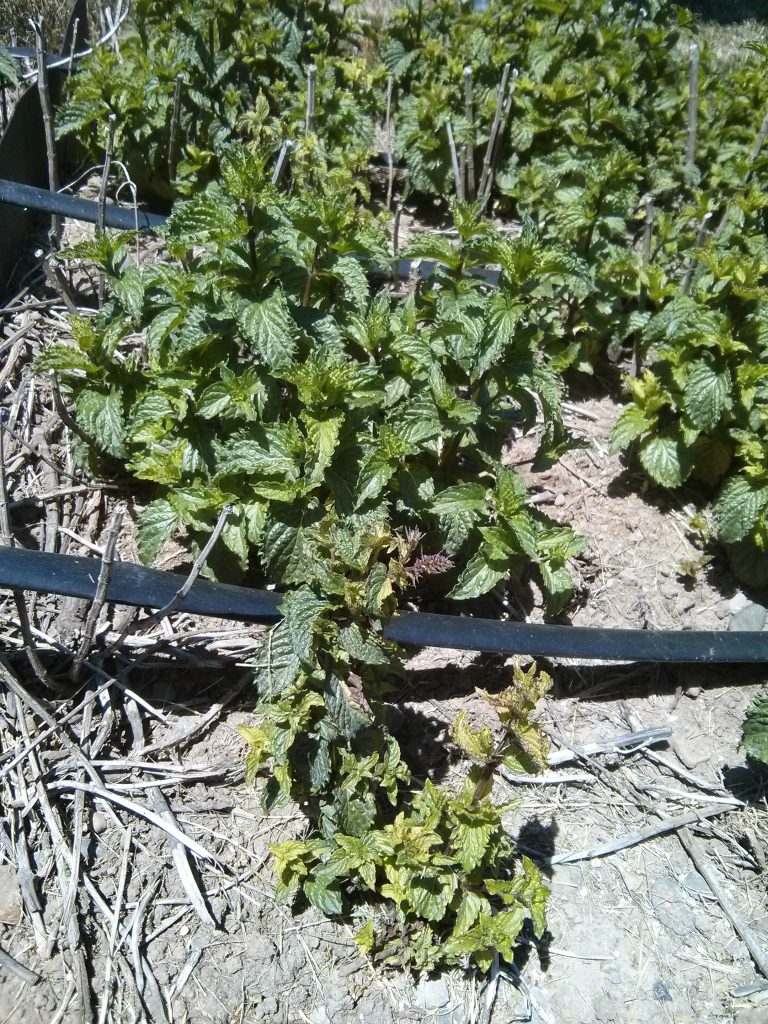
Over the past few decades, mint oil yields have stagnated, with improvements in oil yield primarily driven by optimized management practices rather than genetic advancements. This stagnation stems from the lack of a robust genetic framework for mint breeding. Additionally, U.S. growers face significant challenges with Verticillium wilt susceptibility in the primary peppermint cultivar, ‘Black Mitcham’, for which no alternative resistant variety is currently available. At present, the best management practice is disease avoidance, requiring growers to identify and relocate production to non-infected fields—an approach fraught with logistical complications. The number of years of production of peppermint fields has also been reduced to 3-5 years to avoid the establishment of Verticillium wilt, which reduces profits significantly.
3. SOLUTIONS DEVELOPED
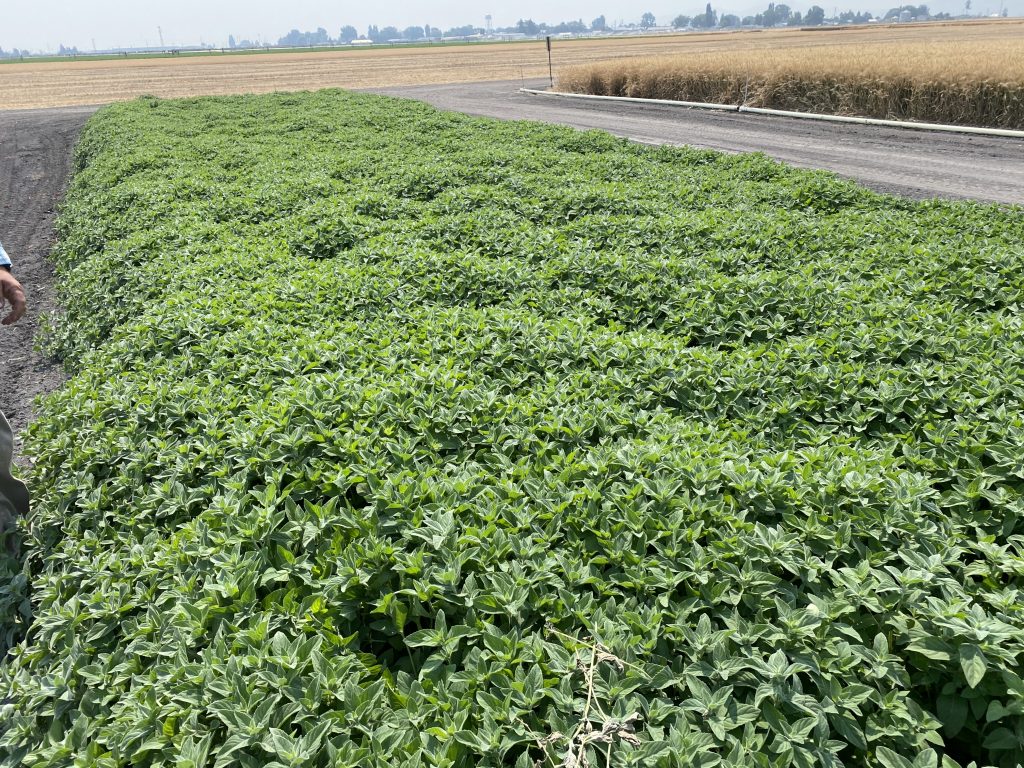
Mint germplasm from wild progenitors of peppermint (Mentha x piperita L.) and spearmint (Mentha spicata L.) from the USDA-ARS National Clonal Germplasm Repository (NCGR) in Corvallis, Oregon was evaluated for field performance, including oil yield and quality. Advanced genetic methods were employed to assess genetic diversity, and an optimal breeding strategy was introduced to integrate genetic traits for improved yields and spearmint flavor profiles (Firl et al., 2024; Kippes et al., 2021).
Peppermint Oil Source
A novel peppermint accession called ‘Velvet’ (PI 617491) was identified as a promising oil source (Kippes et al., 2025). This clone demonstrates high yield potential, vigor, and resistance to Verticillium wilt. Its oil, rich in (-)-Menthol, is a peppermint-type oil that shares strong similarities with the oil from Indian cultivars of Mentha arvensis (L.), making it an appealing option for U.S. growers seeking both quality and resilience.
Spearmint Breeding Strategy
A new breeding approach was established using accessions of crop wild relatives from the NPGS Corvallis genebank to develop new spearmint varieties (Kippes et al., 2021). This strategy aims to improve yields while preserving the characteristic (-)-Carvone and (-)-Limonene profile of spearmint oil. This diploid-based method simplifies breeding efforts compared to the current breeding strategies.
Collaborators involved in developing solution:
- USDA-ARS National Clonal Germplasm Repository, Corvallis, Oregon, USA
- Department of Plant Biology and UC Davis Genome Center, University of California at Davis, Davis, California
- Intermountain Research and Extension Center, University of California Cooperative Extension, University of California Agriculture and Natural Resources, Tulelake, California
- Mars Wrigley Ingredient Science, Mars, Inc., Chicago, Illinois
4. IMPACT
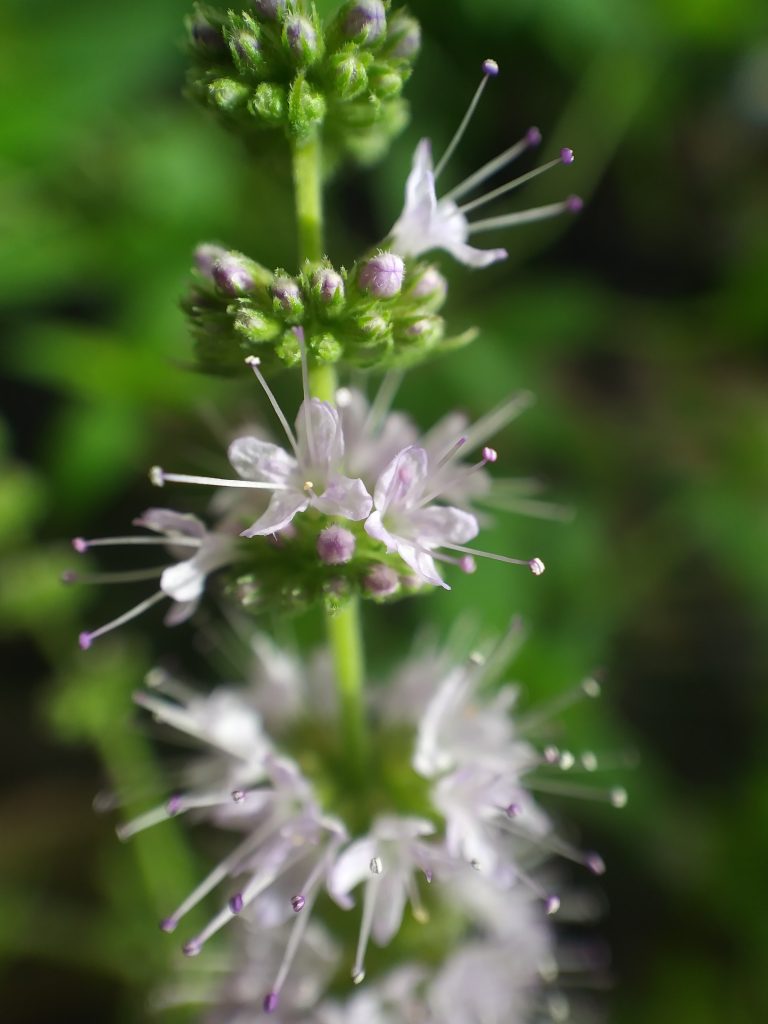
Peppermint
The introduction of a new peppermint clone, ‘Velvet’, offers U.S. growers an additional tool to combat Verticillium wilt while maintaining high-quality oil production. Moreover, this discovery provides insights into the genetic composition responsible for unique mint oil profiles, opening avenues for future mint breeding efforts.
Spearmint
The new breeding strategy for spearmint represents a transformative approach, reducing complexity and accelerating the development of new varieties. This strategy promises significant yield improvements and could serve as the foundation for future genetic advancements in spearmint breeding programs.
5. GERMPLASM
Mentha hybrid ‘Velvet’ (PI 617491) is the NPGS genebank accession identified as a high-yielding source of peppermint oil.
Kippes et al. (2021) identified two diploid NPGS genebank accessions that were essential to their breeding strategy: Mentha longifolia subsp. capensis M.long_4 (PI 557767), which displayed an 89.5% increase in oil yield, compared to the industry standard, and Mentha longifolia subsp. polyadenia M.long_7 (PI 557769), which produced spearmint type oil.
6. REFERENCES
Firl A, Lieberman MC, Kippes N, Tsai H, Dowd E, Comai L, Henry IM. 2024. Chromosome-scale assembly of apple mint (Mentha suaveolens). BMC Genomic Data 25:96. https://doi.org/10.1186/s12863-024-01278-y
Kippes N, Tsai H, Lieberman M, Culp D, McCormack B, Wilson RG, Dowd E, Comai L, Henry IM. 2021. Diploid mint (M. longifolia) can produce spearmint type oil with a high yield potential. Scientific Reports 11:23521. https://doi.org/10.1038/s41598-021-02835-6
Kippes N, Culp D, Wilson RG, Dowd E, Comai L, Henry IM. 2025. Velvet: An alternative high-yielding peppermint clone for oil production. Crop Science 65:e21421. https://doi.org/10.1002/csc2.21421
7. CHAPTER INFORMATION
Citation: Kippes N, Comai L, Henry IM, Bassil NV, Scagel C, Reinhold L. 2025. Mint NPGS Germplasm – Oil Yield. In: Volk GM, Chen K, Byrne P (Eds.) Plant Genetic Resources: Success Stories. Fort Collins, Colorado: Colorado State University. Date accessed. Available from https://colostate.pressbooks.pub/pgrsuccessstories/chapter/mint-npgs-germplasm-oil-yield/
Content originally submitted: February 20, 2025
Date of publication: May 27, 2025
USDA is an equal opportunity provider, employer, and lender. Mention of trade names or commercial products in this article is solely for the purpose of providing specific information and does not imply recommendation or endorsement by the U.S. Department of Agriculture.

